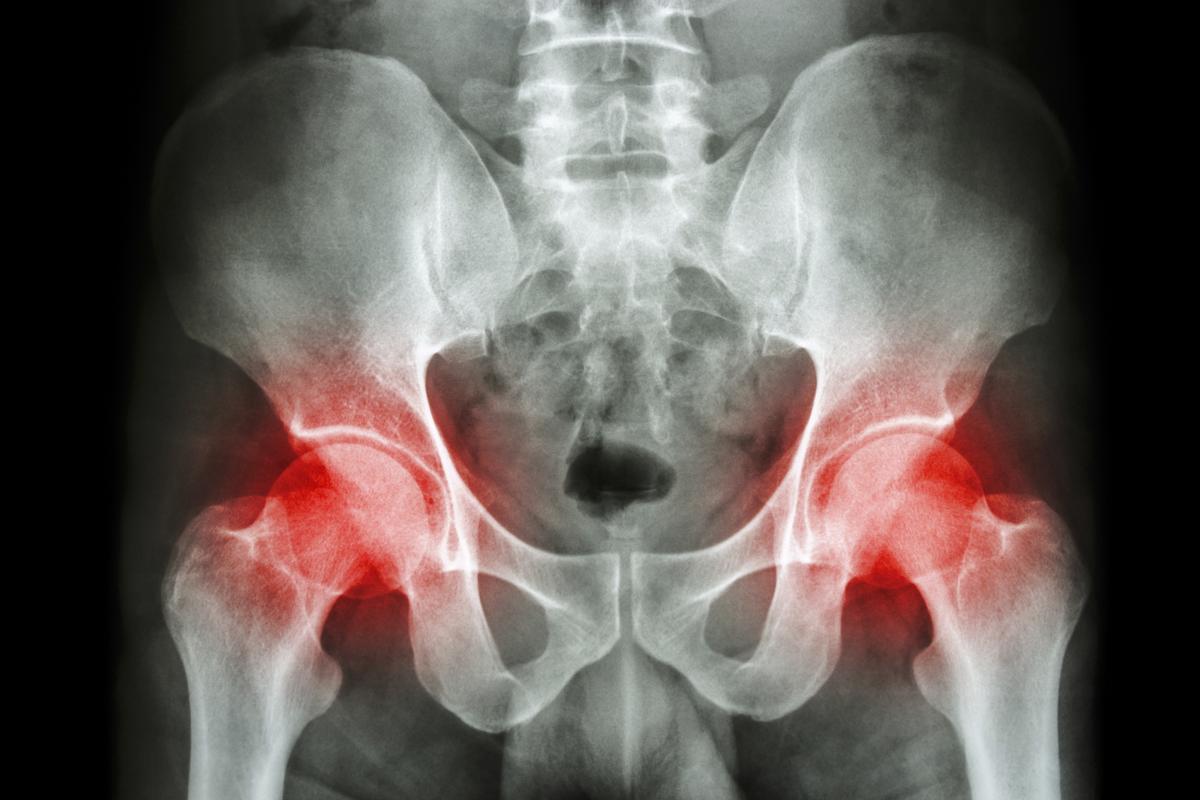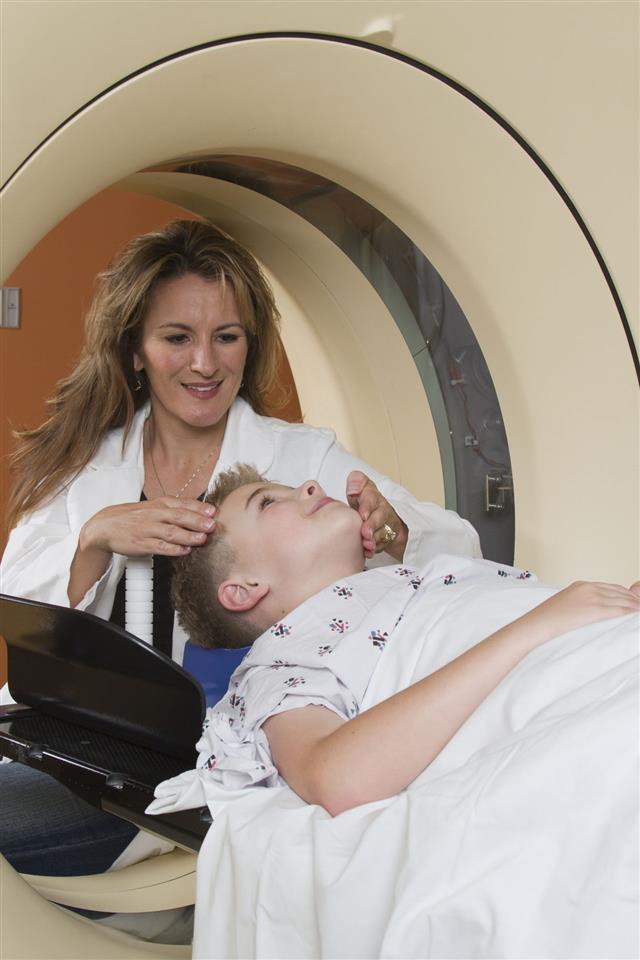
The term ‘sarcoma’ refers to a malignant tumor that may start in the bones, muscles, cartilage, connective tissues, etc. Bone cancer may either start in the bone tissue itself, or spread to bones from another part of the body. The following write-up provides information on bone cancer symptoms and the types of bone cancer.
Cancer refers to an abnormal mass of tissue or a malignant growth that is caused by uncontrolled division of cells. The proliferation of abnormal cells occurs due to mutations in the genes, which adversely affect the process of cell division. The cancerous cells do not respond to the natural processes that control cellular growth and death. As these cells grow and divide, they invade and replace the normal tissue. These could even metastasize or spread to other parts of the body.
Cancer that starts in a bone is called primary bone cancer, while metastatic cancer refers to the cancer that spreads to the bone from other parts of the body. According to the American Cancer Society, primary bone cancer accounts for less than 0.2% of all cancers. The most common types of primary bone cancer include osteosarcoma, chondrosarcoma, and Ewing’s sarcoma. While primary bone cancers occur rarely, bone metastasis is not uncommon. Around 80% of the metastatic cancers that affect the bone are due to primary carcinomas that affect the prostate, breast, lung, kidney, or thyroid.
Though the exact cause of bone cancer is not yet fully understood, it is believed that exposure to radiation during radiotherapy, or genetic predisposition are the precipitating factors. Statistics have also revealed that certain types of bone cancer may affect adolescents and teenagers, especially during their growth years, while others commonly affect adults. Being diagnosed with a benign bone tumor in the past may increase the likelihood of a person developing chondrosarcoma. Paget’s disease, which is a medical condition that is characterized by the abnormalities in the bone destruction and regrowth, is also believed to be a risk factor for cancer of the bone.
The symptoms of bone cancer vary, depending on the location and size of the cancerous growth. The symptoms are likely to be severe in the later stages. Here are some of the signs and symptoms that are commonly experienced by people affected by bone cancer.
☛ Pain in and around the affected bone is one of the most common symptoms. The patient may experience a dull, intermittent pain at night initially, but the intensity of pain may worsen with time. If the cancerous growth is in the leg, the affected individual may limp, and experience pain while walking.
☛ Besides pain in the affected bone, swelling and tenderness may also be observed around the site of the cancerous growth. Generally, there is a gradual increase in the severity of the symptoms with time.
☛ Sometimes a lump or mass may develop either in the tissues that surround the bone or on the bone itself. This commonly occurs with fibrosarcoma or malignant fibrous histiocytoma (MFH), but can occur with other types of bone tumors as well.
☛ The cancerous growth may even weaken the bone, thereby making the affected individual susceptible to frequent bone fractures and bone loss.
Some of the less common symptoms of bone cancer include:
☛ Unexplained weight loss
☛ Night sweats
☛ Chills
☛ Fever
These symptoms usually occur when the malignant growth spreads to the other parts of the body. Certain complications can arise due to the elevated calcium levels in the blood (hypercalcemia), which may be due to the destruction of the bone. Hypercalcemia may lead to symptoms such as fatigue, constipation, loss of appetite, and bone pain.
Primary bone cancer occurs most commonly in the legs and arms, although it can also affect other bones of the body. Primary cancers are usually called sarcomas, of which there are several types. Each type of sarcoma affects a different type of bone tissue. The most common types of primary bone cancer include chondrosarcoma, Ewing’s sarcoma, and osteosarcoma. While osteosarcoma and Ewing’s sarcoma commonly affect children and teenagers, the incidence of chondrosarcoma is higher in adults.
Osteosarcoma
This is the most common type of bone cancer that usually affects the thigh bone, shinbone, or the bone extending from the shoulder to the elbow. The incidence of osteosarcoma is higher in children, adolescents, or young adults. Osteosarcoma usually begins at the ends of bones, where new bone tissue forms. The risk increases if a person is suffering from retinoblastoma or Li-Fraumeni syndrome. Men are more susceptible to this type of cancer than women. The symptoms of osteosarcoma include:
☛ Pain that worsens with time
☛ Swelling or the development of a lump on the bone
☛ Difficulty in breathing (if a rib is affected)
☛ Limp (if the cancer affects the bones in the leg)
Chondrosarcoma
This is the second most common amongst the primary bone cancers. It affects the cartilage, which is the fibrous connective tissue that is located around the joints. It results in abnormal growth of the bone and cartilage. Chondrosarcoma mostly affects adults. Benign tumors of hyaline cartilage, Ollier disease, Maffucci syndrome, and osteochondromatosis can put a person at an increased risk of developing chondrosarcoma. Though such growths can develop on any bone, the bones in the pelvic region, rib cage, shoulder blades, arms, and legs are more likely to get affected. The symptoms of chondrosarcoma include:
☛ A dull pain that becomes constant as the tumor grows
☛ Swelling or a firm lump on the affected bone
☛ Poor range of motion of the affected limb
Ewing’s sarcoma
After osteosarcoma, Ewing’s sarcoma is the second most common bone cancer affecting people in the age group of 10 to 25 years, with teenagers being most affected. It affects the shaft, or the middle part of large bones. It usually occurs in the long bones of the upper arm and thigh, and the hipbones. It can also affect the ribs. The symptoms of Ewing’s sarcoma include:
☛ Pain that worsens with time
☛ Limited range of motion of the joint
☛ Swelling
Fibrosarcoma and MFH are other types of cancer that usually start in the soft tissues around the bones. However, MFH could start in the bones located in the arms or legs. Chordoma refers to a rare, slow-growing cancer that affects the bones of the skull and the spine.
Signs of bone cancer develop over time. The cancer cells grow rapidly and spread throughout the deep bone tissues. Cancer may later spread to the surrounding areas outside the bone. Once it reaches the lymph nodes, it can easily metastasize to other organs. The stage of cancer can be determined by observing the size, spread, and the grade of the tumor. The tumor is said to be high-grade when it seems to grow and spread faster, and also looks abnormal under the microscope. Bone cancer is divided into four stages.
☛ In the first stage, the cancer is limited to the bone.
☛ Tumors in the second stage are considered to be high-grade, although the cancer is still restricted to the bone where it started.
☛ The third stage is characterized by high-grade tumors that are present in more than one place on the affected bone.
☛ In the fourth stage, the cancer starts spreading to nearby lymph nodes, lungs, or other distant sites.
Several diagnostic tests and imaging tests need to be conducted to diagnose bone cancer. Besides conducting diagnostic tests and a physical examination, doctors also analyze the patient’s medical history and family history. An X-ray examination may also be conducted along with bone scan, MRI, CT scan, radionuclide bone scan, or positron emission tomography to identify any abnormal changes in the structure of the bone. If the tests reveal the presence of an abnormal growth, a biopsy is performed to determine whether the growth is benign or malignant. Once a person is diagnosed with bone cancer, doctors may recommend treatment options such as chemotherapy, radiotherapy, targeted therapy, and palliative care to destroy the cancerous cells, and improve the quality of life of the patient. At times, surgery may be performed to remove the cancerous growth.
Various factors affect the successful treatment of bone cancer, one of the most important being the early detection of the symptoms of bone cancer. It is therefore essential to pay attention to the symptoms that are usually exhibited by people affected by bone cancer. Even though the symptoms could actually be caused by other bone diseases, if a person experiences any of the aforementioned symptoms, he/she must seek medical assistance for proper diagnosis and timely treatment.
Disclaimer: The information provided in this article is solely for educating the reader. It is not intended to be a substitute for the advice of a medical expert.








